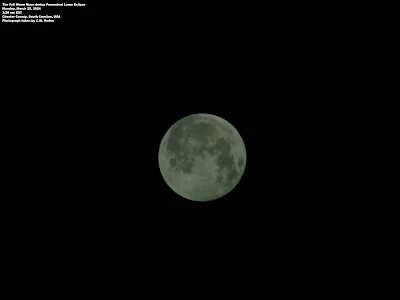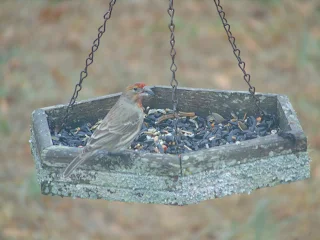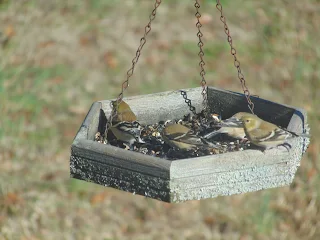One month
before, on Wednesday, February 1, 1865, Major General William T.
Sherman's invading Union army entered the Palmetto State, beginning the Carolinas Campaign, the final major campaign of the American Civil War.
Despite
delaying the Union forces in several small battles, and winning one victory at Aiken, South Carolina, the Confederate defenders could only
conduct a fighting withdraw in the wake of Sherman's nearly 60,000 man
blue-clad horde -- which conducted itself harshly on the first Southern
State that first dared to declare its independence from the Federal
Union. Many cities, including the State capitol of Columbia, South Carolina, were burned almost to the ground.
During Sherman's Carolinas Campaign the Official Records
report that about 46 Union soldiers were executed by Confederate
troops, or civilians. These were Yankee foragers -- better know as
bummers -- many of whom were caught in the act of robbing Southern
civilians, or committing other personal crimes.
In addition to the
destruction of military targets, many of Sherman's forage took it upon themselves to enact personal
retribution upon the civilian population of the Carolinas, burning down
houses, robbing and destroying valuables, and even committing acts of
rape and murder. The worst of the latter were against the African-American slave
population that they were alleged to be liberating from bondage.
These
acts became so heinous that many of these bummers, when they were
caught by the Confederate army, were shot or hanged without trial on the
spot.
The majority of
these incidents occurred once Sherman's forces advanced past Columbia,
South Carolina into upper South Carolina and many of these acts were
blamed on Confederate cavalry under the command of Lieutenant General
Wade Hampton III, himself a native of South Carolina.
The
following correspondence regarding these incidents was exchanged between
Generals Sherman and Hampton gives great insight into just how ugly the war
became in its final year.
On Friday, February 24th, General Sherman wrote the following to Hampton directly:
HDQRS. MILITARY DIVISION OF THE MISSISSIPPI,
In the Field, February 24, 1865.
Lieut. Gen. WADE HAMPTON,
Commanding Cavalry Forces, C.S. Army:
GENERAL: It
is officially reported to me that our foraging parties are murdered
after capture and labeled "Death to all foragers." One instance of a
lieutenant and seven men near Chesterville, and another of twenty "near a ravine eighty rods from the main road" about three miles from Feasterville.
I have ordered a similar number of prisoners in our hands to be
dispensed of in like manner. I hold about 1,000 prisoners captured in
various ways, and can stand it as long as you; but I hardly think these
murders are committed with your knowledge, and would suggest that you
give notice to the people at large that every life taken by them simply
results in the death of one of your Confederates. Of course you cannon
question my right to "forage on the country." It is a war right as old
as history. The manner of exercising it varies with circumstances, and
if the civil authorities will supply my requisitions I will forbid all
foraging. But I find no civil authorities who can respond to calls for
forage or provisions, therefore must collect directly of the people. I
have no doubt this is the occasion of much misbehavior on the part of
our men, but I cannot permit an enemy to judge or punish with wholesale
murder. Personally I regret the better feelings engendered by this war,
but they were to be expected, and I simply allege that those who struck
the first blow and made war inevitable ought not, in fairness, to
reproach us for the natural consequences. I merely assert our war right
to forage and my resolve to protect my foragers to the extent of life
for life.
I am, with respect, your obedient servant,
W.T. SHERMAN,
Major-General, U.S. Army.
Three days later on Monday, February 27th, General Hampton responded, not mincing words:
HEADQUARTERS,
In the Field, Feb. 27, 1865.
Maj. Gen. W.T. Sherman, U.S. Army:
GENERAL: Your communication of the 24th inst. reached me
today. In it you state that it has been officially reported that your
foraging parties are "murdered" after capture. You go on to say that you
have "ordered a similar number of prisoners in our hands to be disposed
of in like manner". That is to say, you have ordered a number of
Confederate soldiers to be "murdered."
You characterize your order in
proper terms, for the public voice, even in your own country, where it
seldom dares to express itself in vindication of truth, honor, or
justice, will surely agree with you in pronouncing you guilty of murder
if you order it carried out. Before dismissing this portion of your
letter, I beg to assure you that for every soldier of mine "murdered" by
you, I shall have executed at once two of yours, giving in all cases
preference to any officers who may be in your hands.
In reference to the statement you make regarding the death of your
foragers, I have only to say that I know nothing of it; that no orders
given by me authorize the killing of prisoners after capture, and that I
do not believe my men killed any of yours, except under circumstances
in which it was perfectly legitimate and proper that they should kill
them. It is a part of the system of the thieves of whom you designate as
your foragers to fire the dwellings of those citizens whom they have
robbed. To check this inhuman system, which is justly execrated by every
civilized nation, I have directed my men to shoot down all of your men
who are caught burning houses. This order shall remain in force so long
as you disgrace the profession of arms by allowing your men to destroy
private dwellings.
You say that I cannot, of course, question your right to forage on the
country - "It is a right as old as history." I do not sir, question this
right. But there is a right older, even, than this, and one more
inalienable - the right that every man has to defend his home and to
protect those who are dependent on him; and from my heart I wish that
every old man and boy in my country who can fire a gun would shoot down,
as he would a wild beast, the men who are desolating their land,
burning their homes, and insulting their women.
You are particular in defining and claiming "war rights." May I ask if
you enumerate among these the rights to fire upon a defenseless city
without notice; to burn that city to the ground after it had been
surrendered by the inhabitants who claimed, thou in vain, that
protection which is always accorded in civilized warfare to
non-combatants; to fire the dwelling houses of citizens about robbing
them; and to perpetrate even darker crimes than these - crimes too black
to be mentioned?
You have permitted, if you have not ordered, the commission of those
offenses against humanity and the rules of war; you fired into the city
of Columbia without a word of warning; after its surrender by the mayor,
who demanded protection to private property, you laid the whole city in
ashes, leaving amidst its ruins thousands of old men and helpless women
and children, who are likely to perish of starvation and exposure. Your
line of march can be traced to the lurid light of burning houses, and
in more than one household there is now an agony far more bitter than
that of death. The Indian scalped his victim regardless of age or sex,
but with all his barbarity he always respected the persons of his female
captives. Your soldiers, more savage than Indian, insult those whose
natural protectors are absent.
In conclusion, I have only to request that whenever you have any of my
men "murdered" or "disposed of," for the terms appear to be synonymous
with you, you will let me hear of it, that I may know what action to
take in the matter. In the meantime, I shall hold fifty-six of your men
as hostages for those whom you have ordered to be executed.
I am, yours, &c.,
WADE HAMPTON
Lieutenant-General.
 |
Major General William T. Sherman, U.S.A. and Lieutenant General Wade Hampton III, C.S.A.
Photos courtesy of the U.S. Library of Congress.
|
Hampton more than got his point across as no mass executions of Confederate prisoners took place after this exchange.
However,
this isn't to say that there were no further individual
"eye-for-an-eye" acts of retaliation between the two armies, the last of
which occurred at the beginning of March, 1865.
On
Wednesday, March 1st, one of Sherman's bummers, Private Robert M. Woodruff
of Company H, 30th Illinois Volunteer Infantry, was found dead near Big Lynch
Creek in Chesterfield County allegedly beaten to death by the enemy.
The next day, on Thursday, March 2nd, the Headquarters, 17th Army Corps issued the following order:
HDQRS. SEVENTEENTH ARMY CORPS,
Thirteen Miles from Cheraw, S.C., March 2, 1865.
SPECIAL ORDERS, No. 56.
I:
In accordance with instructions from the major-general commanding the
army, directing that for each of our men murdered by the enemy a life of
one of the prisoners in our hands should be taken, Maj. J.C. Marven,
provost-martial, Seventeenth Army Corps, will select from the prisoners
in his charge one man and deliver him to Brig. Gen. M.F. Force,
commanding Third Division, to be shot to death in retaliation for the
murder of Private R.M. Woodruff, Company H, Thirtienth Illinois
Volunteers, a regularly detailed forager, who was beaten to death by the
enemy near Blakney's Bridge on or about the 1st day of March, 1865.
The Union major initially
refused to pick a prisoner for execution, believing that Private
Woodruff -- who'd apparently been unpopular among his own peers -- might
have been murdered by one of his own comrades.
It
would actually be learned several years later that the Yankee had
actually been killed by a slave who had been taken by this soldier. When
the opportunity arose, the slave killed Private Woodruff and returned
to his master's farm.
Regardless, the major was threatened with court-martial if the order was not carried out.
At
about noon that day, lots were then drawn among the Confederate
prisoners. One young prisoner was the unfortunate winner, but another
prisoner stepped forward volunteering to take the young man's place, an
older man named James Miller.
James Madison Miller was a native
of Chesterfield County, born in Jefferson, South Carolina on Sunday,
April 7, 1816 and was a Methodist minister and father of six when the
war broke out in 1861. Private Miller served in Company C, 5th
Battalion, South Carolina Reserves (also known as Brown's Battalion), and later as a guard and minister for prisoners at the Florence POW Stockade between September of 1864 till February of 1865. The 48 year old Miller was at home on leave when he was captured by Union troops in late February, 1865.
Private Miller was taken to a nearby ravine where a firing squad of
half-a-dozen member of Woodruff's infantry company waited to execute
him.
According to eyewitness accounts, the Union major tried to
tie Miller's hands, but the Confederate private asked for no restraints.
The major then handed him a handkerchief and told the prisoner to drop
it when his prayers were concluded.
According to the personal account of a Wisconsin Union soldier who witnessed the terrible scene:
"As
the smoke floated away among the tall pines, our boys looked with
sadness upon the bleeding corpse of a brave old man who had med his
death unflinchingly and heroically for the crime of another man. If the
old man had bounded away into the forest, we'd never have run a step to
catch him."
The following was recorded in a Union soldiers diary entry:"At
noon the prisoners had by lot selected one of their number and was sent
under guard to the 30th Ills - and was by them shot at 2 P.M. The
unfortunate man was over 40 years of age and the father of numerous
family - he met his fate like a hero, five balls entered into his
breast. On visiting his grave afterward I found the following
inscription: "James M. Miller Co. C. Browns Batt. S.C. Infy. Who was
shot to death in retaliation for a regularly detailed forager who was
murdered and found near Big Lynch Creek S.C., March 2nd 1865."
The
execution of Private James M. Miller was the final act of petty retaliation by Sherman's invading army in South Carolina before marching
north into eastern North Carolina and the final surrender of the Confederate Army of Tennessee over a month later.
 |
Private James M. Miller's grave and memorial marker at
Five Forks Methodist Church Cemetery near Pageland, in
Chesterfield County, South Carolina. |











































































































